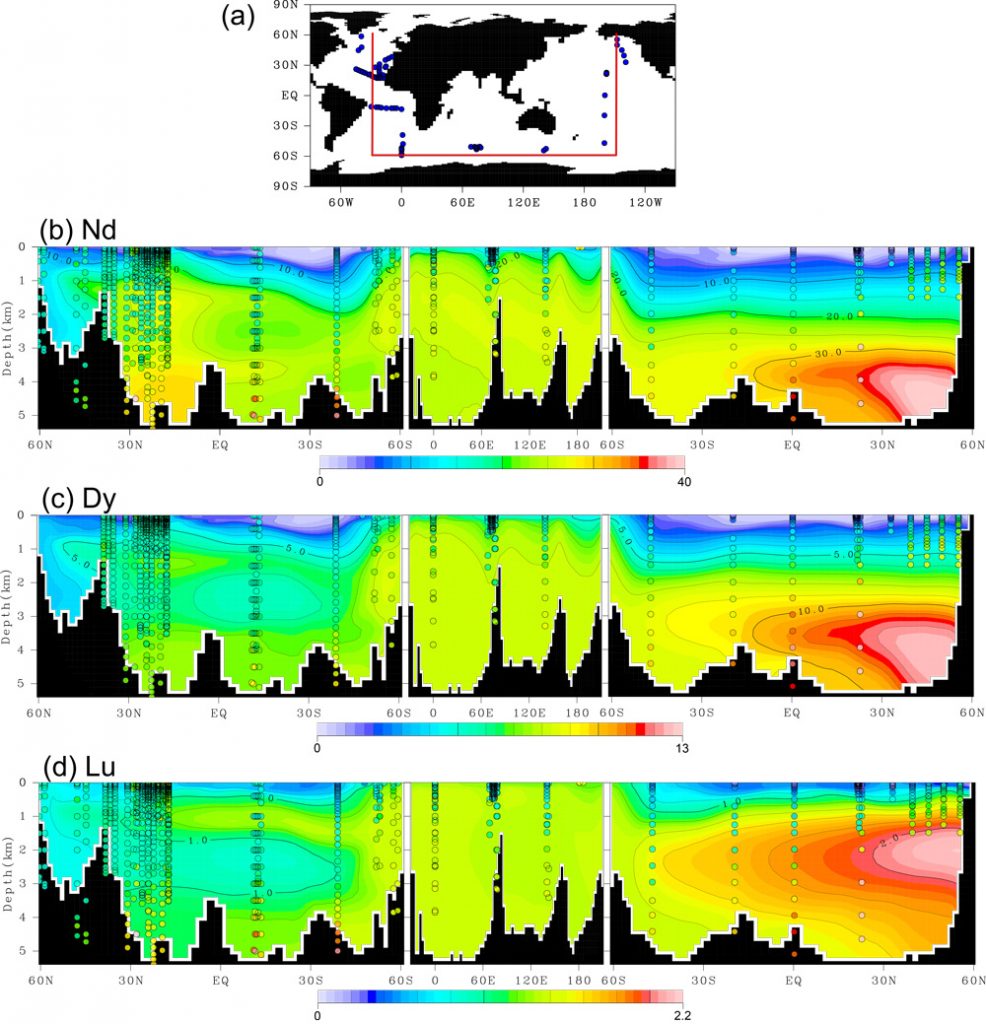Adding external sources allow a better simulation of the oceanic rare earth elements cycles
Oka and colleagues (2021, see reference below) demonstrate that the global distribution of rare earth elements (REEs) can be reproduced by considering the internal cycle associated with reversible scavenging and external REEs inputs around continental regions. The originality of this work is that the parameter controlling the strength of the distinct REE affinity to particles was taken different for distinct REEs, in agreement with their diverse behaviours (ie. light REEs (LREEs) more prone to adsorb on particles than heavy REEs). They newly demonstrated that the external REE input from the coastal shelves plays a key role in controlling the vertical profiles and their inter-basin differences. This external source role is particularly relevant for LREEs like Nd, confirming what was expected from the studies of these element isotopes and the Boundary Exchange concept.

The global distribution of REEs is successfully reproduced in the model which considers reversible scavenging and source from the continental regions. The model captures the observed features of Nd, Dy, and Lu concentrations in terms of the vertical profiles and inter-basin differences among REEs. This study confirmed that the vertical profile of REEs is controlled by the reversible scavenging and newly reported that the source from the continental regions plays an important role for explaining the inter-basin differences among REEs.
Reference:
Oka, A., Tazoe, H., & Obata, H. (2021). Simulation of global distribution of rare earth elements in the ocean using an ocean general circulation model. Journal of Oceanography, 1–18. DOI: https://doi.org/10.1007/s10872-021-00600-x
